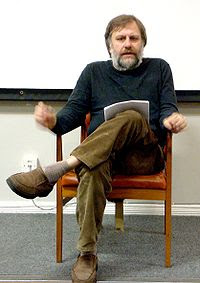Sfantul Ierarh Varlaam al Moldovei
Azi este 30 august. Este ziua in care este praznuit Sfantul Ierarh Varlaam, Mitropolitul Moldovei. Am aflat prima oara de el copil fiind, primisem in dar o Istorie a Literaturii Romane scrisa de Profesorul Ion Bianu. Ni s-a vorbit apoi despre el la scoala, in prima clasa de liceu. Imi pare rau ca nu am cumparat Cartea sa Romaneasca de Invatatura, atunci cand s-a gasit prin librarii. Am in biblioteca mea alte doua monumente ale limbii romane: Psaltirea lui Dosofteiu si Didahiile lui Antim. Daca as fi avut si cartea lui Varlaam, cat de bogat sufleteste as fi fost! Pentru ca acesti trei ierarhi au fost nu numai sfinti ai bisericii noastre, dar si inainte incepatori ai limbii noastre culte.
Azi am gasit un text superb despre Varlaam. Este scris de catre Mitropolitul Bartolomeu Anania. Il redau aici integral. Il puteti citi si la:
Sunt emotionat amintindu-mi si de faptul ca, de multi ani, aproape in fiecare vara, ma opresc la manastirea Secu, in fata zidului de miazazi al bisericii; acolo se afla o firida sub care se odihnesc osemintele mitropolitului Varlaam: pun acolo o floare si un gand inflorit.
Varlaam nu este inmormantat nici in biserica, sa se impiedice de el cei vii, nici in afara bisericii, sa se impiedice de el cei ce o inconjoara la Inviere sau la Prohod; este ingropat in zid, in interior, asa ca nu stanjeneste pe nimeni. Ii stanjeneste doar, in schimb, pe oamenii de stiinta, pe lingvisti, pe filologi, pe istoricii literari... si se vede ca i deranjeaza teribil, de vreme ce se pune problema daca el este sau nu autorul unei opere care, totusi, este.
In ce ma priveste, mi-as lua libertatea de a gandi nitelus mai altfel, intrucat eu nu sunt nici istoric si nici critic literar, nici om de stiinta, nici om de catedra (am trecut doar meteoric, candva, pe la o catedra de teologie), dar ma gandesc cu foarte mari emotii si cu mare evlavie la acest Varlaam, care, intr’adevar, s’ar putea sa nu fi fost un carturar in sensul clasic al cuvantului, sa nu fi avut studii sistematice de filologie, teologie, filosofie, asa cum cunoastem ca le-a avut, de pilda, Constantin Stolnicul Cantacuzino; s’ar putea ca Varlaam sa fi fost ceea ce se cheama un autodidact. Ei si? Ce-i cu asta, ca adica a fost un autodidact, ca nu a absolvit o academie in Bologna, la Padova, la Venetia... Sadoveanu nu avea decat liceul; Arghezi avea tot numai liceul; Eminescu si Creanga, nici atat; Vasile Voiculescu nu a facut studii de litere si filosofie, ci numai de medicina. Totusi, fiecare din ei a fost ceea ce stim ca este! Da, e posibil ca acest Varlaam - un calugar smerit si un vladica tot atat de smerit - sa fi fost un autodidact, si e posibil sa fi... compilat! Ei si? Nu trebuie neaparat sa presupunem ca el a primit o comanda de la Vasile Lupu sau de la Miron Barnovschi sau de la un altul: Asculta, Varlaame, de maine te asezi la masa de scris si-mi vei scoate o Cazanie pe limba romana! si ca i s’au pus in fata niste carti, ca omul le-a citit - presupunem ca stia greceste si slavoneste -, si a facut fise, le-a asternut pe masa si a zis: Aici traduc exact, aici mi se pare ca trebuie sa schimb....
Inalt Prea Sfintitul Antonie nu are dreptate cand crede ca ipoteza sa este subreda; nu e subreda deloc! A talmaci inseamna, intr’adevar, a traduce, dar e mai mult decat a traduce. A talmaci e un cuvant pe care l-a preferat Arghezi: o traducere trebuie sa fie mai mult decat o transpunere dintr’o limba in alta. Arghezi l-a tradus pe La Fontaine (stia bine frantuzeste), dar a tradus din Krilov fara sa stie o boaba ruseste si a tradus din Berthold Brecht fara sa stie deloc nemteste. Zaharia Stancu a tradus din Esenin fara sa stie limba rusa; Sadoveanu a tradus Psaltirea lui David fara sa stie o boaba de ebraica. Ei, Doamne! fiecare din ei, ce talmaciri splendide au facut! Un La Fontaine al lui Arghezi e mai mult decat La Fontaine, un Krilov e mai mult decat Krilov, iar Esenin tradus de Zaharia Stancu e incomparabil mai frumos decat cel tradus de George Lesnea, care stia bine limba rusa. Succesul nu tine atat de filolog, cat de scriitor. Or, se vede cat de colo ca Varlaam e un mare scriitor!
Talmacind, sigur ca a tradus, dar a facut mai mult decat atat. Eu as duce lucrurile mai departe decat Inalt Prea Sfintitul Antonie. Noi, cei din tagma preoteasca, stim ca activitatea predicatoriala e un proces indelungat, de o viata intreaga, si ca predica nu vine chiar de la sine: inca de tanar citesti niste carti de predici, vezi cum au propovaduit si altii, indiferent ca s’au chemat Bossuet, Bourdaloue sau Ilie Miniat. Iti construiesti predicile dupa niste modele initiale, apoi le folosesti de la an la an, o viata intreaga, incat ti se creeaza impresia ca le repeti si ca nu mai spui nimic nou, desi e cert ca ai adaugat de la tine din destul.
Actul cultural ce se numeste creatie - de facere a unei carti - este si simplu, si complex: nucleului original i se adauga toate lecturile care s’au contopit in tine si au format o magma din care iese ceva nou; e ca un vulcan foarte violent sau foarte domol, dar care vulcan se numeste, pana la urma, o carte. Pe vremea lui Varlaam nu exista sentimentul paternitatii literare, dar nici constiinta furtului (acestea sunt orgoliile noastre, ale modernilor; si facem un cap de tara din faptul ca cineva nu ne a citat; avea dreptate Inalt Prea Sfintitul Antonie: scriem carti luand de la altii - cu corectivul: nu intotdeauna citam - fie ca uitam, fie ca ne facem ca uitam; cunoastem cazuri din propria noastra contemporaneitate - dar repet, anticii nu-l aveau -; ce-i drept, poate ca erau mai cinstiti sufleteste.
Discutiile sunt extrem de interesante, si asupra lui Varlaam ca persoana, si asupra lui Varlaam carturarul, autodidactul, traducatorul, talmacitorul - cum i se spune -, dar eu as impinge ipoteza de lucru ceva mai departe: procesul elaborarii trebuie sa fi fost mult mai indelungat si, practic, aceasta Carte romaneasca de invatatura a fost rezultatul unei indelungate activitati predicatoriale pe care el, cel ajuns mitropolit, va fi desfasurat-o. Cat despre pasajele suspecte din carte, pare evident ca acolo unde a tradus sau, sa zicem, a prelucrat, autorul nu a facut altceva decat sa-si rememoreze niste pasaje: a scos cartea din firida si a zis: Aici oare-mi aduc eu bine aminte?... si din fuga condeiului a tradus sau mai degraba a parafrazat.
Mie mi se pare mult mai important faptul ca Varlaam a scris o Carte romaneasca de invatatura si ca aceasta carte exista, ca aceasta carte a cunoscut un destin glorios, ca aceasta carte a circulat si continua sa circule in toata suflarea romaneasca. Pentru aceasta, dumneavoastra, targumuresenii, sunteti vrednici de toata lauda, nu numai pentru ca judetul acesta poseda un important numar de exemplare din Cazania lui Varlaam, dar si pentru faptul ca acest moment emotionant al culturii romanesti se desfasoara, aici, in Targu-Mures.
As vrea sa reinnod gandul domnului Cornel Moraru, precum si pe al domnului Serafim Duicu, in sensul ca aceasta carte trebuie sa redevina foarte actuala. Mai mult: Varlaam trebuie sa devina - sau sa redevina - contemporanul nostru, dar, domnilor, nu pentru a demonstra ca noi, romanii, am fost unitari in credinta si limba si ca prin el noi avem inca un argument... Iertati-ma, onorata asistenta: m’am saturat de argumente prin care noi, romanii, trebuie ca’n veci sa demonstram ca suntem la noi acasa! Suntem la noi acasa, iar aceasta nu se demonstreaza: este un adevar axiomatic, evident prin sine insusi! Faptul ca eu, roman, sunt acasa si in Moldova, si in Transilvania, si in Banat - de la Nistru pana la Tisa - nu poate fi sustinut prin argumente stiintifice: argumentul este fiinta mea, ca sunt aici, ca asa cum am trait intotdeauna si asa cum voi trai in vesnicie; eu am sentimentul eternitatii mele ca roman. De aceea, nici pe Varlaam nu-l pun pe masa negocierilor si argumentelor stiintifice; nu am nevoie de el in aceasta ipostaza; Varlaam imi este scump prin altceva: prin actualiatea lui.
Suntem la capatul catorva decenii in care stapanitorii comunisti au depus toate eforturile sa ne desparta in doua unitatea care ne-a caracterizat intotdeauna: credinta si cultura. Cu multi ani in urma am fost invitat in Maramures, intr’un Decembrie, la serbarile Maramuresului, si acolo se scria pe o pancarta mare: Festivalul datinilor laice de iarna, asa, ca sa se stie ca celelalte sunt excluse, ca si cum cele laice si cele nelaice n’ar fi fost creatia unuia si aceluiasi popor! Tot acolo s’a admis, intr’un tarziu, sa se joace Vifleemul. Dar prin partile acelea, printre personajele cunoscute ale Vifleemului: Irod, magii, stratiotul, sunt si o seama de personaje secundare, figurative: ingerasii, de-o parte, si dracusorii, de alta parte. Ei bine, puterea de atunci, judeteana, i-a permis Vifleemului sa circule; dar, ca sa fie eliminata orice nota de misticism, au eliminat ingerasii, dar i-au pastrat pe dracusori!... Ei bine, eforturile acestea noi le am trait uneori la modul dramatic; este ca ei, comunistii, au cautat sa ne obisnuiasca cu gandul ca religia nu are ce cauta in cultura, si nici cultura nu are ce cauta in religie (pentru ca popa nu trebuie sa stie decat molitfele si sa dea cu cadelnita). In ciuda acestui fapt, noi, Biserica, a trebuit sa facem un efort sustinut si tacit pentru ca studentii nostri de la teologie sa invete nu numai teologie, ci si cultura generala, iar aceasta pentru ca preotul trebuie sa fie un carturar prin excelenta.
Acum reiau teza pe care am lansat o si asupra careia nu voi inceta sa insist: dupa aceste decenii de comunism, poporul roman are nevoie si de refacere morala; or, pentru aceasta refacere morala el are nevoie de refacerea unitatii dintre cultura si religie. Religia, pe de o parte, prin cultura, sa-si deschida ferestrele spre cerul larg al universalitatii umane, iar cultura la randul ei, prin religie, sa-si recapete profunzimea si dimensiunile firesti. Numai prin aceasta sinteza, prin aceasta unitate, vom izbuti sa ne debarasam de sechelele care ne-au mai ramas si de care trebuie sa ne scuturam noi si generatiile de dupa noi.
Din acest punct de vedere, Varlaam este carturarul si mitropolitul deopotriva, asemenea lui Dosoftei, lui Antim Ivireanul, lui Grigore Dascalul, lui Simion Stefan, asemenea lui Andrei Saguna, ca sa citez numai cativa dintre ierarhi. Omul de credinta si omul de cultura ne-a pus pe masa - si i-a pus o poporului roman - aceasta opera, carte deopotriva de credinta si de cultura. S’a vorbit frumos - si se va mai vorbi - despre splendida limba romaneasca a Cazaniei lui Varlaam; or, limba face parte din cultura, asa cum maduva ei face parte din credinta. Varlaam e un model pe potriva caruia se cere sa ne recapatam constiinta propriei noastre meniri in propria noastra tara si in propria noastra eternitate. Recapatandu-ne aceasta constiinta, vom simti intr’adevar ca Varlaam este contemporanul nostru si ca noi redevenim contemporanii lui Varlaam.
 Carte româneasca de învatatura la dumenecele de preste an, si la praznicele împaratesti si la Svântii mari (Cazania). Iasi, 1641-1643
Carte româneasca de învatatura la dumenecele de preste an, si la praznicele împaratesti si la Svântii mari (Cazania). Iasi, 1641-1643
(http://www.parohiasfantulvarlaamalessandria.com/?p=5347)
(Icon and Orthodoxy)
(Intalniri neasteptate cu Romani)

























